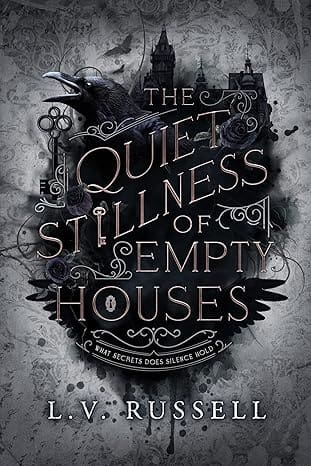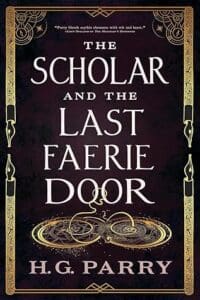
Synopsis:
Theodora Corvus can hear the whispers of her crumbling family home. She can hear the whispers of Kingsward Manor, her place of employment. She sees the watchers by the lake, black-eyed and waiting. But Broken Oak is silent. Broken Oak is empty.
When Theodora takes the job as governess to young Ottoline Thorne, she leaves behind her beloved grandmother and the decaying ruins of her childhood home to travel far north to Broken Oak Manor. There, she finds a house filled with secrets. Under the stern eye of the foreboding housekeeper, Theodora quickly navigates the dark and winding corridors of Broken Oak, only to find herself irrevocably drawn to the mysterious lord of the manor. But someone walks the hallways late after nightfall, their footsteps leading to the attic. The only place in the sprawling house that does not remain silent. As her scandalous feelings for Cassias Thorne grow, Theodora fights to unearth the secrets of Broken Oak. Who wanders the house at night? Where is the Lady of the manor? What lies behind the attic door high up under the eaves of the house? “Where is Lady Thorne, Cassias? Where is your wife?”
Review:
Though it was published recently, The Quiet Stillness of Empty Houses has the feel of a classic gothic tale, both in atmosphere and in style.
The story follows Theodora, a young woman with a grief-filled past. She lost both of her parents at a young age and was raised by her grandmother, who had some very traditional ideas about what a woman’s placement in the world should be, even for the time period (while it isn’t mentioned specifically in the text, it had the feel of the mid/late-1800s.) Theodora accepts a position as governess to a family some distance away at her grandmother’s urging, though she believes throughout the story her father would have wanted her to pursue something else.
When she arrives at Broken Oak Manor to begin her new job, there are subtle hints that things aren’t normal almost immediately, but they’re introduced slowly and singly. It was only at the end of the book, after the big twist occurred, that I could fully appreciate how carefully the author layered in little details that, in retrospect, all led to the same grim conclusion. It was reminiscent of how many of Edgar Allan Poe’s stories were constructed, and had a similar overall atmosphere.
While I enjoyed the story, the mysteries it presented, and the subtly eerie setting, I never fully connected with Theodora’s character. There was something about her that was distant for me as a reader, which made it difficult to become emotionally attached (the same was true for the side characters too, though Cassias seemed more relatable than the others.) I’m not sure if the distance was by design or not, but I think I would have enjoyed the reveals at the end a little more if I had an emotional connection to the characters.
Overall, I liked the story. It had just enough creep-factor to set me on edge and keep me reading, and though it had a classic gothic Poe-esque twist near the end, the book concluded on a relatively uplifting note. I wouldn’t call it happy, exactly, but it was fitting.
If you’re looking for books to add to your October/Halloween reading list, I think this one is deserving of a spot.












Leave a Reply